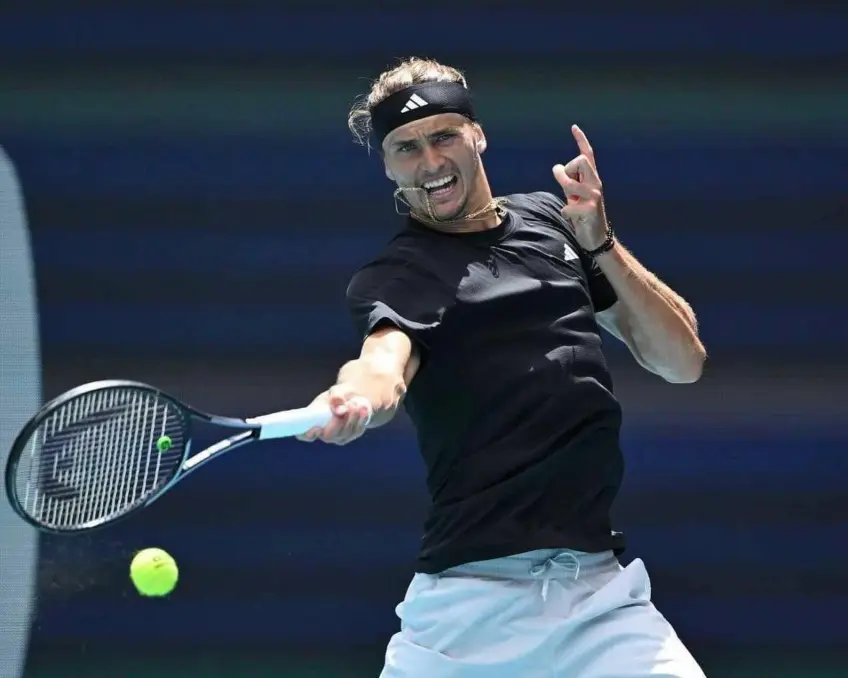
Alexander Zverev recently weighed in on a hot topic within the tennis world: the declining quality of tennis balls, an issue that has drawn strong opinions from players and sparked frequent debate on the ATP and WTA Tours. The German star, known for his candid takes, offered an in-depth perspective on why he believes the current state of tennis balls is problematic, citing both cost-cutting measures by manufacturers and their impact on player performance and health.
Since the onset of the COVID-19 pandemic, tennis players have raised concerns about frequent changes to the balls used across professional tours. One of the loudest voices has been Daniil Medvedev, who has repeatedly criticized the balls for altering gameplay. The conversation resurfaced at this week’s ATP Finals in Turin when Medvedev expressed his frustration, saying the ball’s slower speed allowed anyone to rally with him, reducing his enjoyment of the sport.
Zverev, who recently defeated Andrey Rublev 6-4, 6-4, reflected on the courts in Turin, describing them as “too slow for a hard court.” He also lamented the fading diversity in playing styles, suggesting that the game has become too uniform due to changes in surfaces and equipment. When asked specifically about the role of tennis balls in this shift, Zverev didn’t hold back.
“The ball is a big subject,” Zverev admitted. “Because I’m on the players’ council, I found it fascinating and started investigating. I reached out to companies and studied how tennis balls are made. Since COVID, it’s been a trend across companies, not just one. Dunlop used to be the gold standard, but their balls have declined in quality. I always liked Penn balls too, but they’ve become much slower.”
Zverev explained that manufacturers have resorted to using different rubber materials and altered production methods to reduce costs. “The change in materials means the balls are between 30% and 60% slower on average than they were before COVID. Across the board, the balls have become worse and less consistent. They don’t last like they used to,” he noted. He reminisced about why Dunlop balls once stood out: “New Dunlop balls used to be fast but still maintained their air pressure and consistency as they wore in. Now, they fluff up but lose their internal air pressure too quickly.”
The German star also addressed a more troubling consequence of these changes: player injuries. In early 2023, following the Australian Open, players like Daniil Medvedev and Stefanos Tsitsipas claimed that the new balls were contributing to a surge of upper-body injuries. Initially dismissed by some, these concerns gained traction as more players reported similar problems. Zverev now corroborates those claims.
“The problem with today’s balls is that the pressure and air inside them escape more easily due to the new materials. This causes the balls to lose their bounce and makes them heavier to hit, leading to increased strain on wrists and elbows. This wasn’t common 10 or 15 years ago,” Zverev explained. At 27 years old, he has seen firsthand how these changes impact players’ health.
Despite these concerns, Zverev emphasized that his own results this season have been strong, suggesting that his observations aren’t motivated by poor performance. This year, Zverev reached the French Open final for the second time, claimed Masters titles in Rome and Paris, and reclaimed his career-high ranking of No. 2. “I’m not complaining because of my results. I’m No. 2 in the world, and it’s been a great year. But looking ahead, players’ health is a serious concern if these ball issues persist,” he said. He likened the balls to “shuttlecocks” that start fast before losing momentum abruptly.
On Wednesday, Zverev will face Carlos Alcaraz in a critical match at the ATP Finals. A victory would secure him a semifinal spot, bringing him within two matches of capturing his third ATP Finals title. As he prepares for this challenge, Zverev’s remarks highlight an ongoing debate within the sport, reflecting broader concerns about player welfare and the evolution of tennis in the modern era.
Leave a Reply